In today’s digital age, we hear words like “media” and “design” thrown around frequently, and the contexts we expect to hear them in are ever-increasing, especially in academia. Even so, putting these two words together leaves a lot of room for interpretation, which may explain why our Media Design MA Program is one of the most asked-about graduate options at Emerson. Designed to prepare students for a career improving the world through art, media, technology, and civic engagement, the Media Design program teaches you how to communicate effectively with different populations by creating processes, prototypes, and platforms tailored to the specific needs of those communities.
To give you an inside look at what makes Emerson’s Masters in Media Design so unique, we sat down with Sharry Li, a current Media Design graduate student and Communications Graduate Assistant in Emerson’s Engagement Lab.
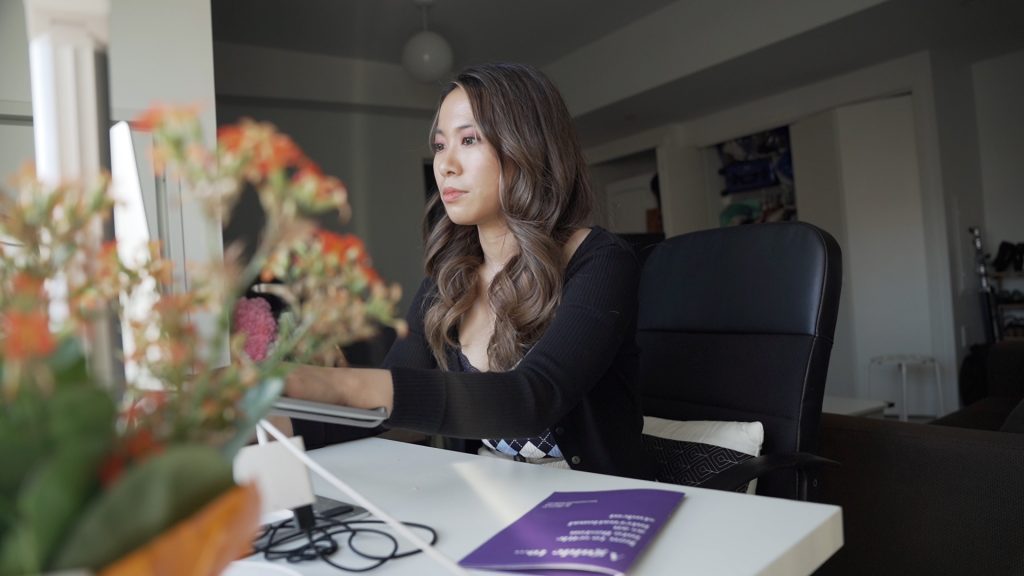
Sharry first became interested in the idea of working in media during the COVID-19 pandemic as she found herself reevaluating her professional goals and looking for a career path that would allow her to help society in her own way. After graduating from Boston University with a degree in Finance and Economics and working in financial planning, an interest in media was always “in the background” for Sharry.
“I thought it was just something I liked to watch or liked to do in my free time, but I didn’t think about it like, ‘Oh, maybe that’s something I could change into my career.’ I realized I’m really familiar with different media applications and that’s something I would definitely be interested in going into […] The Media Design program really stood out to me because a lot of schools don’t combine the theory and application together in one program.”
One of the benefits of such a niche program is the capacity for individual attention. It was after meeting with the director of the program, Paul Mihailidis, that Sharry decided to apply.
“Paul just seemed very enthusiastic about the program and, overall, my experience learning about the Media Design Program was very positive.”
Professor Mihailidis is also the instructor of Civic Media Seminar, where students learn the key theories associated with the idea of civic media: the technologies, designs, and practices that produce and reproduce the process of being in the world with others toward a common good. For Sharry, this was one of the enticing aspects of the program:
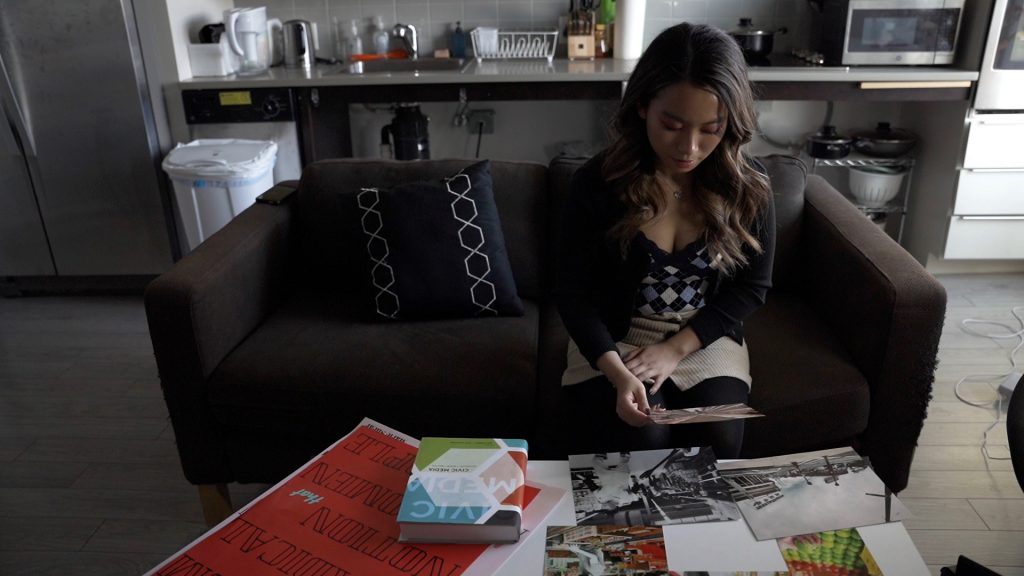
“People come into Media Design thinking, ‘Oh we’re just going to learn about social media,’ but that’s not what we’re learning. I think what’s so special about Emerson’s Media Design Program is that it’s geared toward civic media, and that’s something we don’t see [a lot of] yet in America. Part of civic media is understanding how we can best serve the community. That really interests me, and I had no idea this was what I was going to learn about, because there’s just so little information about civic media around. We’re not just learning how to design media, we’re understanding how to best use media to serve the civic community.”
The structure of the program allows students to put their learning into practice, whether it’s in the classroom at Emerson or out in the real world. Sharry shared three assignments from her Media Studio I class with us, two of which were created to directly address issues she is passionate about. One was a set of posters she designed in response to anti-abortion protestors at a Planned Parenthood near her home. They feature a quote by Marie Shear, a writer and often satirical feminist and activist of the 1980s. For Sharry, this was the first time that she felt she could use her personal values to make an impact on society.
“I think if it wasn’t for this class, or these assignments, I wouldn’t be able to really think about what ways I can — within my ability — showcase what my values are, or what I believe is the correct pathway for our society.”
Sharry spent significant time choosing the color scheme and typeface for the poster to ensure it would be eye-catching before working with Emerson’s Print Center to have it professionally printed. Then came the final part of the assignment: displaying the poster in a public space. Sharry decided to put hers up next to Planned Parenthood.
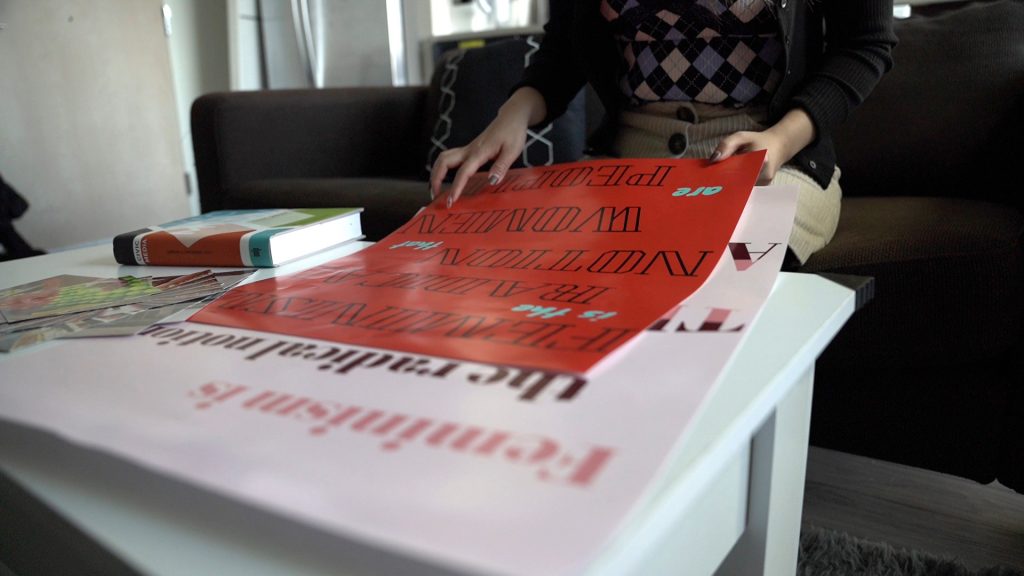
“A lot of students just put [their poster] up and then took it down because they knew that someone was going to take it, for obvious reasons…I was very nervous going into it, but then afterward, I’m like, even if they take it down, it’s fine, as long as even ten people saw my poster, that’s enough. It was actually taken down the next day, but I don’t regret putting it up.”
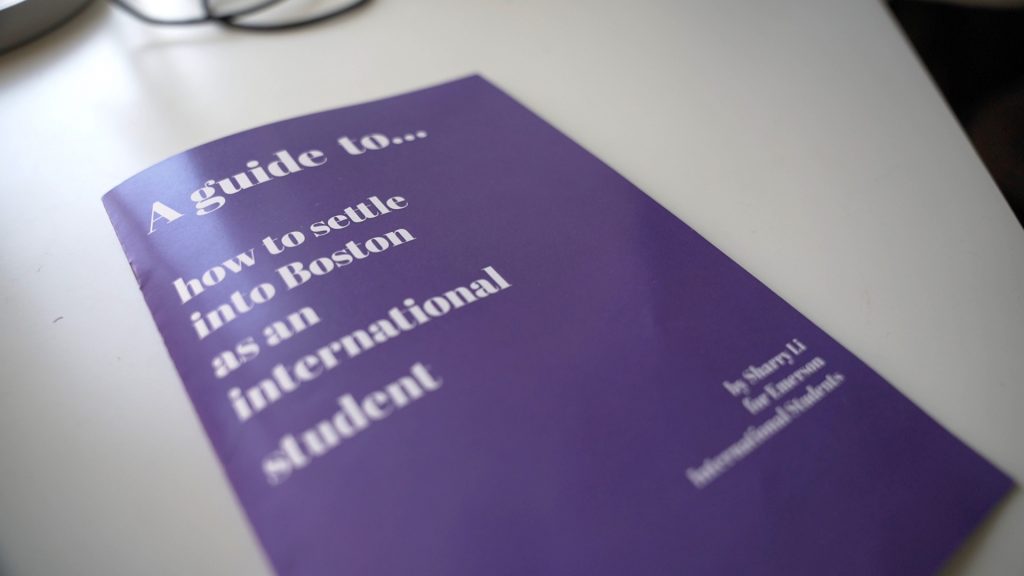
Another of Sharry’s projects, a Zine — defined broadly as any small booklet of information easily distributed on the street — was designed with an audience even closer to home in mind, Emerson’s Office of International Student Affairs. For this assignment, students were instructed to choose between making an informational zine about a social cause or creating a “how-to” booklet that could serve the community.
Covering everything from why this information is important to Emerson’s growing international student community, necessary legal and financial documents, to how to get around and where to live in Boston, as well as personal advice for those experiencing homesickness or culture shock, Sharry’s zine aims to address the gaps she noticed.
“I do know the hardship from travelling from your home country to come here — not just the cultural shock, but also just “adulting” is difficult. I wanted to combine all these useful tips that I wish someone told me when I [first] got here.”
But the Media Design Program does even more than prepare students to use media as a means of advocating for their community, it also gives them the opportunity to explore the many ways that civic media can represent the spirit and values of a community. In another assignment for her Media Studio course, Sharry created a photography project that brought viewers back in time to Hong Kong in the 1980s.
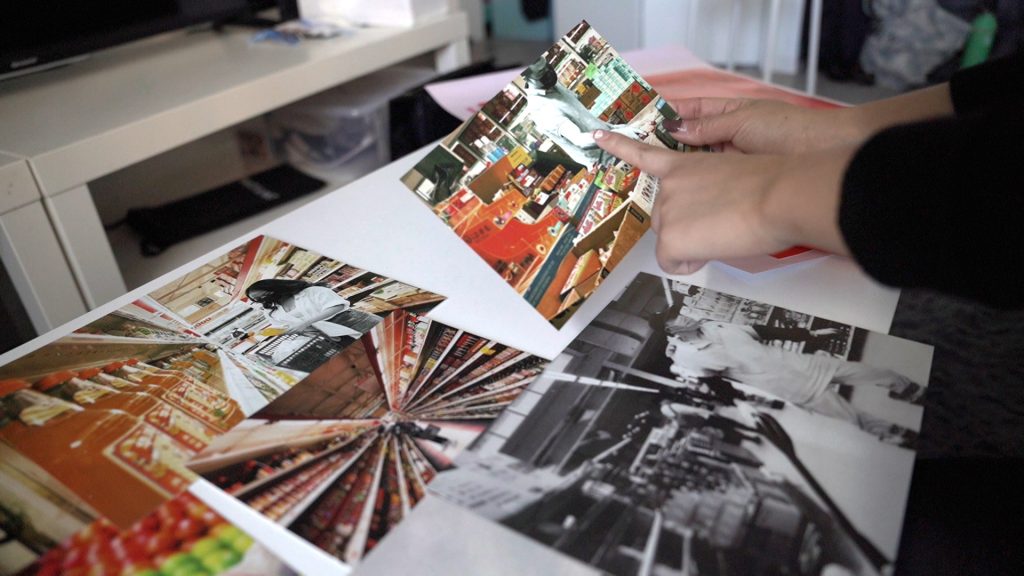
“So the assignment was to shoot a process — I thought about processes we do in our daily lives that we kind of take for granted, and I thought of grocery shopping. Coming from China, I’ve always loved the Super88 that’s located right next to where I live and I thought about how Super88 was actually probably made by people who first immigrated here from the Cantonese area, in and around China and Hong Kong, probably back in the 1960s-1970s. But I chose [to focus my project on] the 1980s because that was a period where Hong Kong was going to be returned to China really soon, but it was still under British influence. I really wanted the photographs to show how you walk into Super88 and can still feel that sense of old Hong Kong, even though the people who shop there are the new generations of Chinese or Cantonese people. I think a lot of what civic media is about — it’s not just all about social justice — is also just capturing a civic community’s values or what their current situation is. I wanted to capture that essence of what [the older generations] brought from China and were able to set up here in Boston, and that we’re able to see that in places like Chinatown or Super88.”
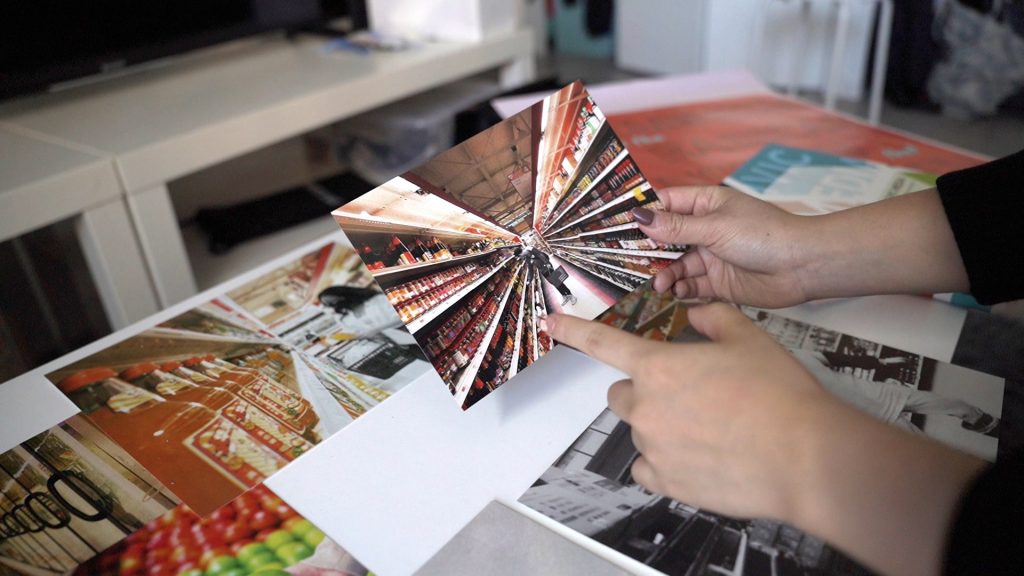
For Sharry, the broad spectrum of media that the cohort is learning to work with has been one of the highlights of the program, and part of what makes it so adaptable to several different career paths or interests.
“The program in itself, especially this class, really challenges your design skills and then brings out your creative side of things. I think it’s really well formatted in that you get to experience a bunch of different tools or different skills that you can use for your future career.”
And speaking of future careers, Sharry had the opportunity to connect one-on-one with one of the professional guest speakers hosted by the Media Design program to learn more about how she can apply her degree to jobs that will make a difference, while also considering the practical facts of supporting herself in the world today.
“Sometimes it’s hard to combine the idea of civic engagement, or civic media, with something that’s lucrative […] We need money to maintain ourselves, so even though I would be interested in, say, working for a nonprofit, I think at the end of the day I really need to think about what’s the most practical option. So, [our guest speaker] recommended maybe going into corporations or businesses and helping them to better market their brand or better serve the public.
“And I think corporations have an idea now that they should be more socially responsible, but I think a lot of them just don’t know where to start because it’s such a mess. You need more media designers to go into these corporations and be like, ‘Hey, what you’re doing right now is clearly not working.’ And how are you going to get those people to purchase your product when they hate what you’re standing up for? So I think that idea is something that we can explore more. For future marketing people or media designers: really think about how we can get into these corporations with the idea that we want to make a change, and we want to make a difference, so that what corporations are doing right now can benefit from our current education and ideologies.”
That’s not to say the career options are limited though, either.
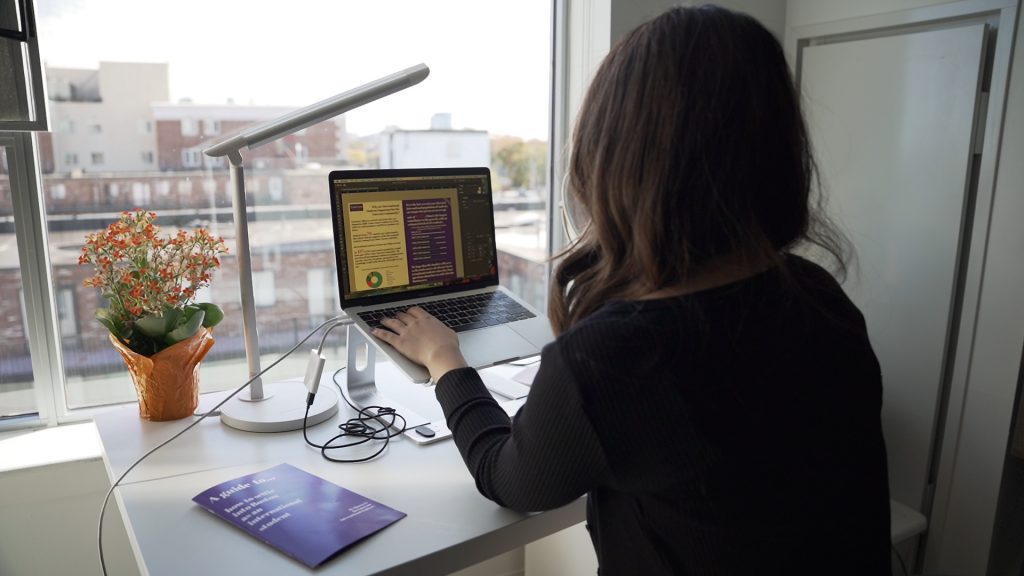
“You can basically use this in any discipline. For example, our current cohort is composed of [a very] diversified [group] of students. We have people who taught, or used to be journalists, and then people who are currently working — [like one student] in New York City working with actresses showcasing Asian-American issues that arose during COVID — and then we also have two film majors, one graduated from Beijing Film Academy and one graduated from University of Washington, and we also have a student from Nigeria who studied mass communications. I think you really have to understand that media [in today’s age] is not just: ‘If you’re a marketing major, if you’re an advertising major, then you need to understand media.’
“The idea of civic media is so broad, it can encompass a lot of different kinds of projects, whether it’s a photography or film project, or even a corporate marketing project, or any project you can think of that’s related to media. I would say, honestly, this program is for anyone who’s interested in making a social change, or any kind of change, using media. If you’re interested in any kind of media — like film, or TV, or communications, or social media — then this could be the place for you, where you not only get to understand what media is, but you also get to understand how to use it in a way that will [allow] what you believe in to be better represented.”
The Media Design Program is also housed within and closely tied to several other projects in Emerson’s Engagement Lab, or ELab for short, a research-based design lab where students, faculty, and staff can come together to help the community better engage with media.
“The Engagement Lab is such a good resource, not just for media design students but any graduate [or undergraduate] students. [It] also helps other classes in Partnered Studios [which really] helps undergraduate students understand how to use media properly, and that leads them to the Media Design Program, hopefully.”
Talking about one of the latest cross-discipline, collaborative projects she’s been working on at the ELab, Sharry noted again how these resources and opportunities set her experience at Emerson apart.
“You get to work with local communities or local institutions to really focus on a social issue that is so important to us nowadays, and I don’t [know] that any other college or any other graduate program in the media design or academic [field] really does that.”
To learn more about Emerson’s Media Design Masters Program, check out the program summary page, or reach out to one of our admissions counselors to set up an appointment.


Leave a Reply